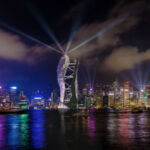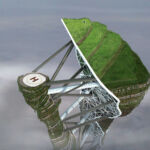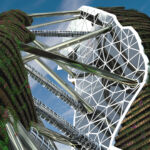Living Skyscraper Hong Kong - Future of Urban Architecture
Project's Summary
The Living Skyscraper in Hong Kong, envisioned by the architectural firm Studio CACHOUA TORRES CAMILLETTI, represents a groundbreaking approach to urban architecture that harmonizes nature with city life. This ambitious project challenges traditional skyscraper design by integrating agricultural concepts into a vertical structure, inspired by the beauty and functionality of rice terraces. The architects aim to create a living ecosystem that not only offers residential and commercial spaces but also nurtures green spaces that contribute to the urban environment.

At the heart of the design are two distinct towers, each serving a unique purpose while maintaining a cohesive architectural identity. The larger tower is dedicated to commercial use, housing offices, retail spaces, and entertainment venues. In contrast, the thinner tower is designed for residential living, providing a sanctuary for residents in the bustling metropolis. This thoughtful separation of functions not only enhances the usability of the building but also allows for a clear expression of each tower's character, making it immediately apparent where living and commercial activities occur.

The sculptural form of the Living Skyscraper is not merely aesthetic; it is deeply connected to its functional and environmental context. The design flows from a strong base and splits into two towers, creating a canyon-like space between them, filled with lush gardens and rice terraces. This unique feature not only serves as a visual and experiential delight but also fosters a sense of community among residents. By integrating natural elements into the architecture, the project aims to promote environmental sustainability and enhance the quality of life for its inhabitants.
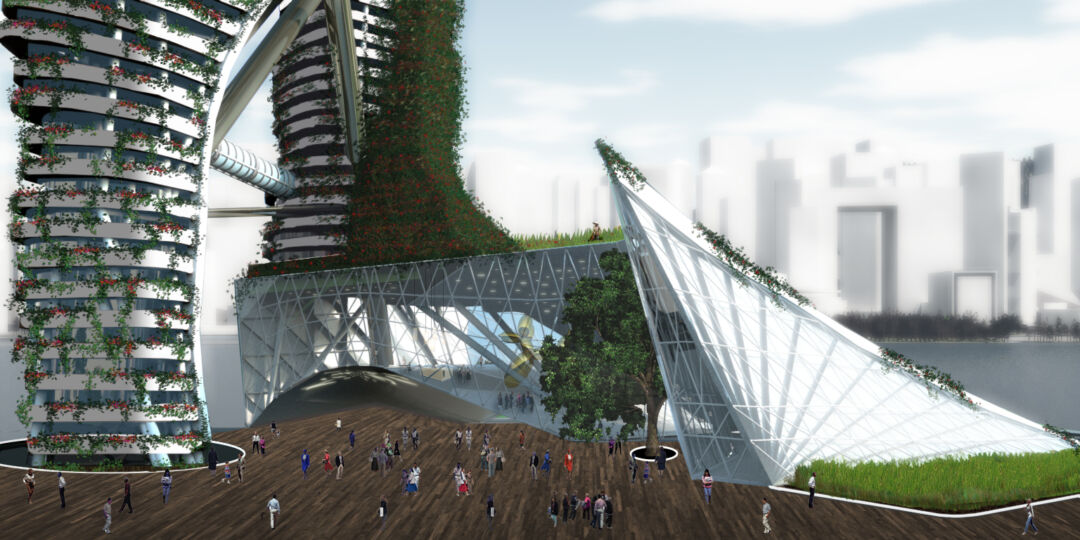
In addressing the challenges of vertical transportation in high-rise buildings, Studio CACHOUA TORRES CAMILLETTI has innovated by designing the residential segments as smaller, more intimate communities stacked vertically. Each section includes its own lobby and is connected to the commercial tower through high-speed lifts. This approach reduces the reliance on multiple elevator shafts and minimizes waiting times, making everyday life in a towering structure more manageable and enjoyable for residents. The focus on user experience is paramount, ensuring that the building enhances rather than complicates urban living.
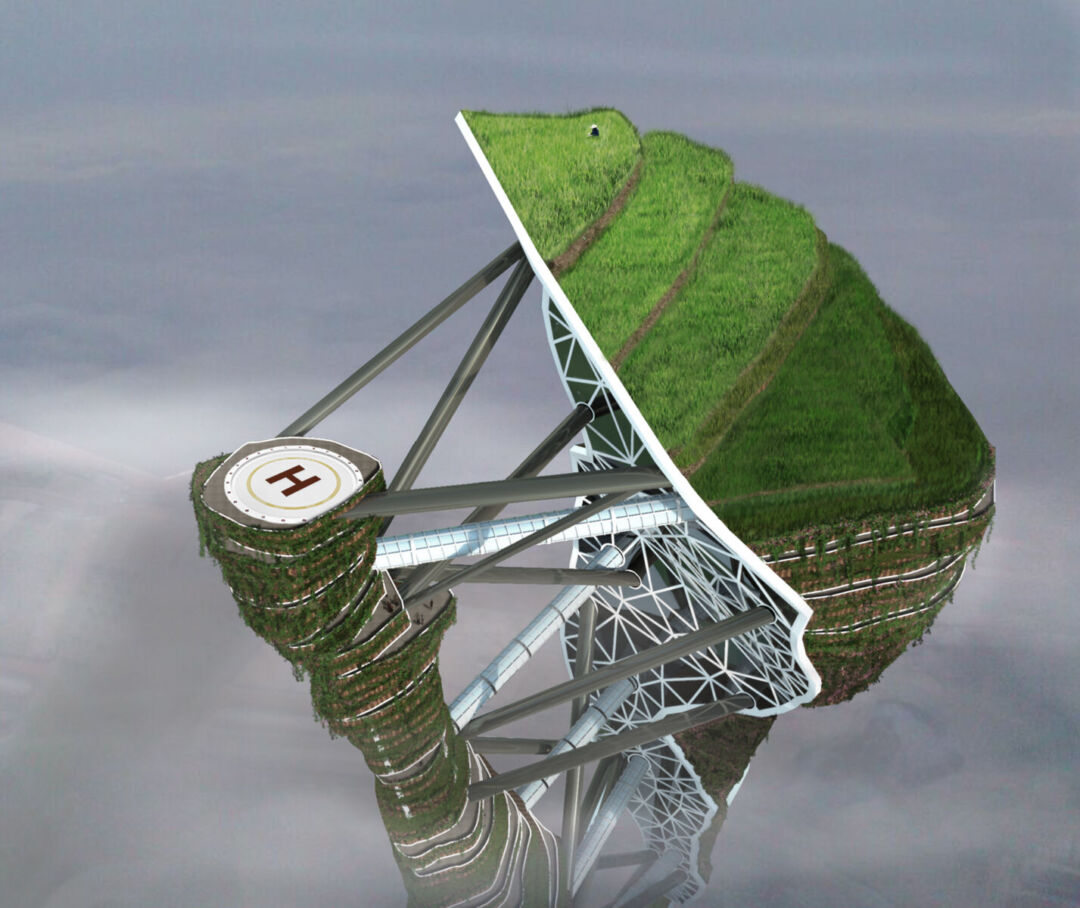
While the architects aspire for the Living Skyscraper to be powered entirely by renewable energy, they acknowledge the current economic constraints. Their exploration of geothermal, solar, and wind energy has led them to consider the future potential of nuclear energy, specifically advanced technologies that promise to be safer and more efficient. By pushing the boundaries of sustainable design, Studio CACHOUA TORRES CAMILLETTI is not only creating a landmark for Hong Kong but also setting a precedent for future architectural endeavors that prioritize both innovation and environmental stewardship.
Read also about the BCVs Project by VOLTOLINI architectures project
